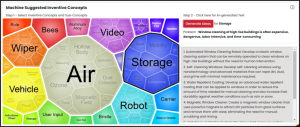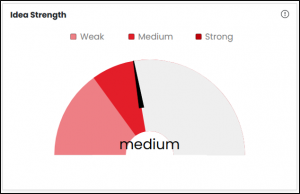
What is Generative AI?
Generative AI refers to a category of machine learning models that are trained to generate new data, such as text, images, or audio. In general, these models are trained on large amounts of data and are able to learn the underlying patterns and relationships in the data. Once trained, they can be used to generate new, unseen data that is similar to the training data. Generative AI has a wide range of applications, including image and video synthesis, idea generation, natural language generation, and music composition.
Harnessing the Power of Generative AI
Generative AI can be harnessed in a variety of ways to generate new and unique content. Some examples include:
- Generating images or videos that are similar to real-world objects or scenes, which can be used in computer vision and video analysis tasks.
- It can be used to generate new plausible ideas or concepts, assisting inventors in coming up with new solutions that they may not have thought of otherwise. For instance, XLSCOUT’s Ideacue.
- Generating text that is similar to human-written text, which can be used in natural language processing tasks such as language translation, text summarization, and question answering.
The Role of an Inventor
The role of an inventor is to identify a problem or opportunity and then use their creativity, knowledge, and skills to develop a solution. This can involve researching existing technologies and concepts, developing new ideas, building prototypes, and testing and refining the invention.
The role of an inventor is vital to the development of new technologies and products that can improve our lives and drive economic growth. Inventors are often motivated by a desire to solve problems and make a positive impact on the world. They are often driven by a passion for their field and a desire to create something new and useful.
In the age of AI, the role of inventors may change as Generative AI can assist and augment the inventor’s creativity and productivity. As a matter of fact, inventors can use generative AI to generate new ideas and designs, and also use AI to simulate and optimize their inventions. Additionally, the use of AI in the production process can make manufacturing and scaling of the invention more efficient.
Exploring the Benefits of Generative AI for Inventors
Generative AI can offer a number of benefits for inventors in terms of creativity, efficiency, and productivity. Some of these benefits include:
Generating New Ideas
Generative AI can be used to generate new ideas and concepts that an inventor might not have thought of on their own. This can help to increase the diversity of ideas and potentially lead to the discovery of new and innovative solutions.
Complementing Human Creativity
Generative AI can be used to complement human creativity by providing new ideas and solutions that might not have been thought of otherwise. This can help to enhance an inventor’s creativity and productivity.
XLSCOUT has employed Generative AI in its patent search tool. Using this, XLSCOUT is assisting individuals and organizations come up with new and innovative solutions to problems. Ideacue by XLSCOUT is designed to assist inventors with idea generation. We have created an Idea Playground powered by Generative AI for inventors. It suggests machine-generated inventive concepts to inventors, which they can combine with their own ideas to improve. These ideas can be generated based on the user’s preferred technology. As an interactive dashboard, Idea Playground allows users to select inventive concepts and sub-concepts and generate AI-based ideas based on them.

Inventive concepts act like idea triggers that can be used to simulate ideation and generate new ideas. Subsequently, these can be very useful for inventors. They assist them in thinking outside the box and developing creative solutions that they would not have considered otherwise. Along with ideation, idea evaluation is also an important part of the innovation cycle. XLSCOUT also includes an Idea Dashboard. The easy-to-use dashboard helps you with idea evaluation, brainstorming, and improving idea quality. It provides numerous other insights while significantly increasing the efficiency of research and development. The dashboard assists inventors in quickly assessing the strengths and weaknesses of their ideas in a few simple steps. It gives a qualitative indication of the strength of an idea. Subsequently, using the indicator, inventors can determine whether or not their idea is ready to move forward. Or whether it requires more brainstorming or iterations.

Moving Towards Becoming a Super Inventor
By using Generative AI, inventors can move towards becoming “super inventors” by augmenting their creativity, efficiency, and productivity.
Combining human creativity with generative AI can help inventors to generate innovative ideas, optimize designs, and automate repetitive tasks. This can lead to the development of new and improved products, processes, and technologies that can benefit society.

